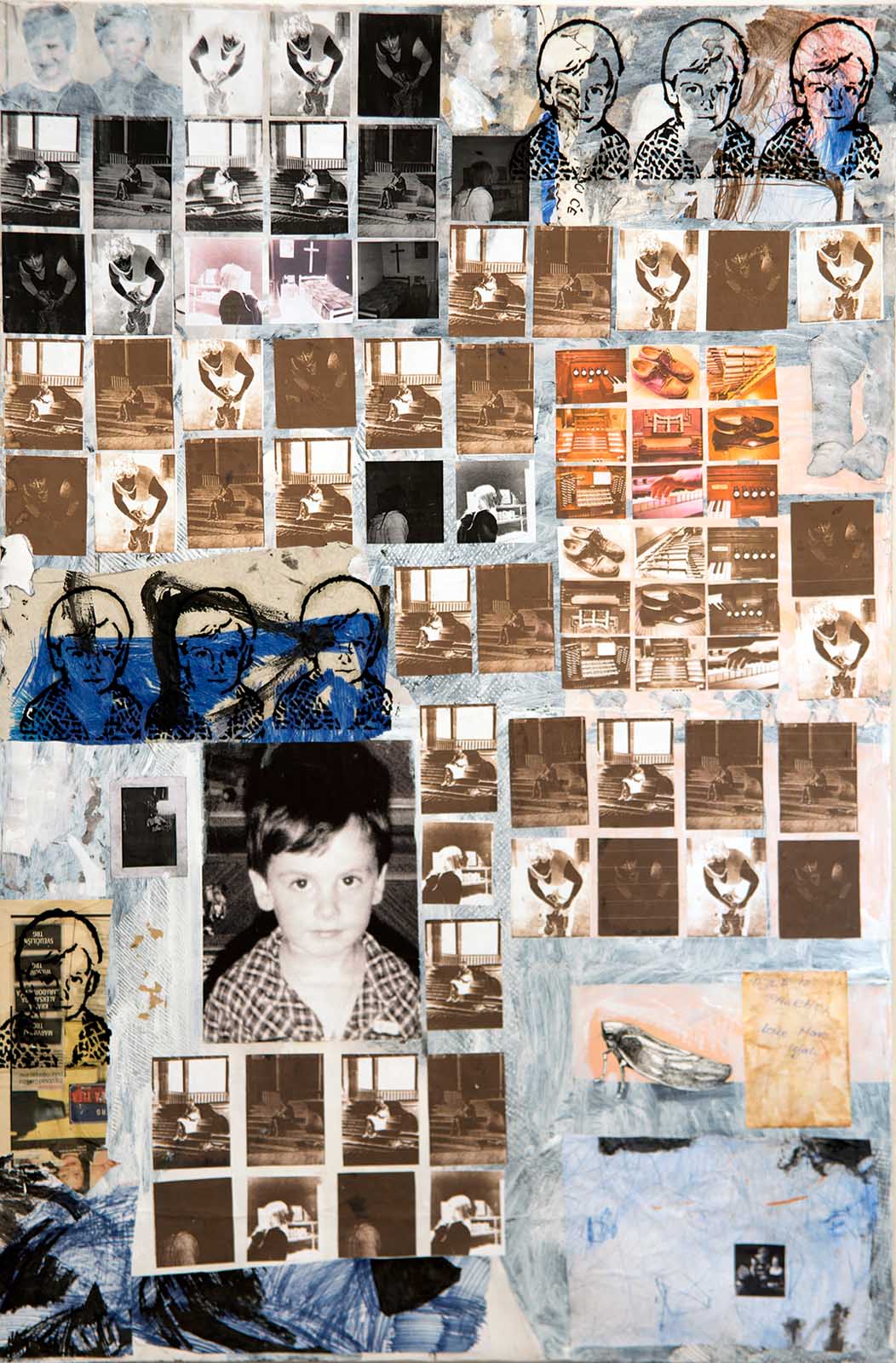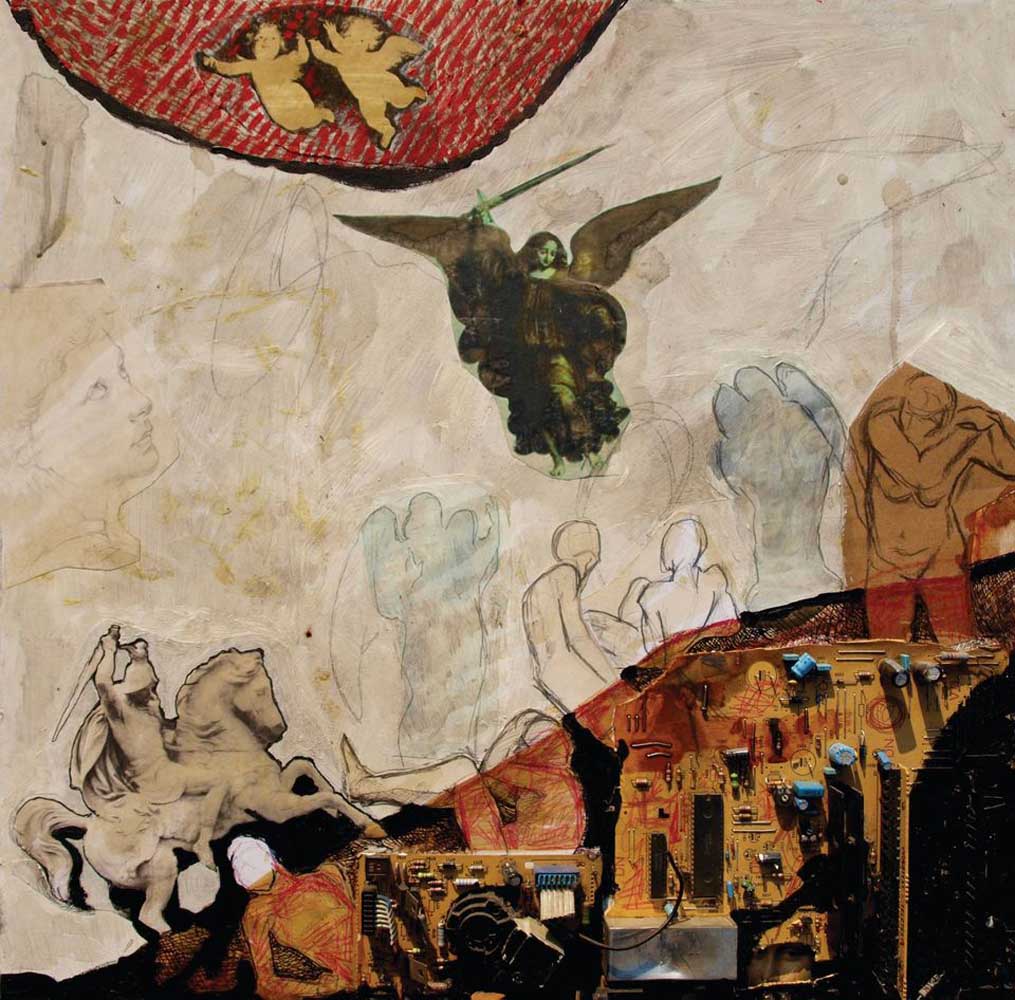
Battle for the sky, 2015, combined technique, 60 x 60 cm 
Second fall, 2010, collage and ink on paper, 25 x 17 cm 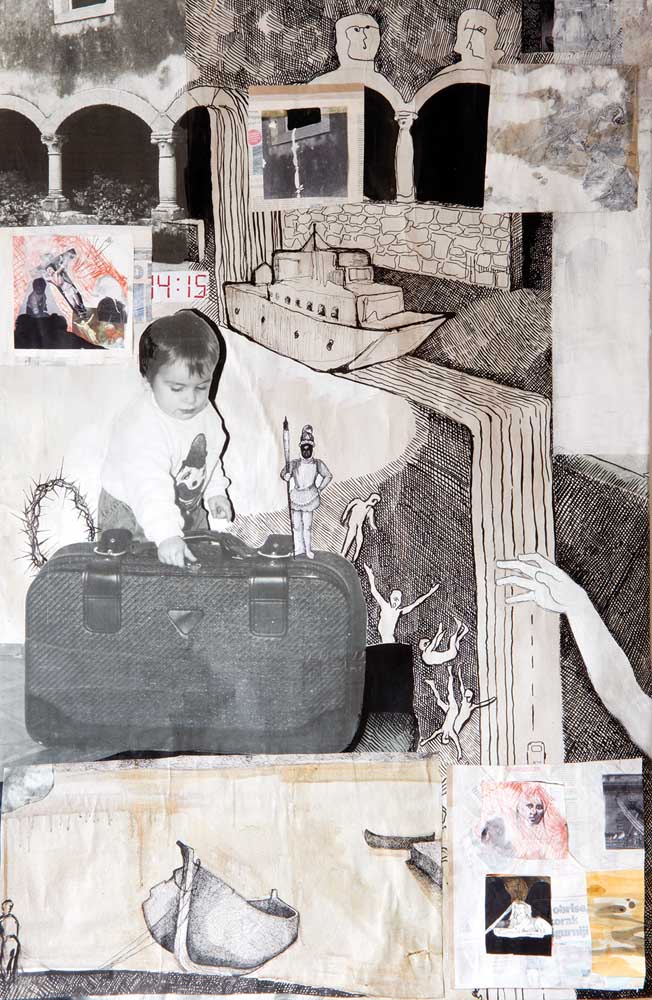
Line of life I, 2015, combined technique, 150 x 100 cm 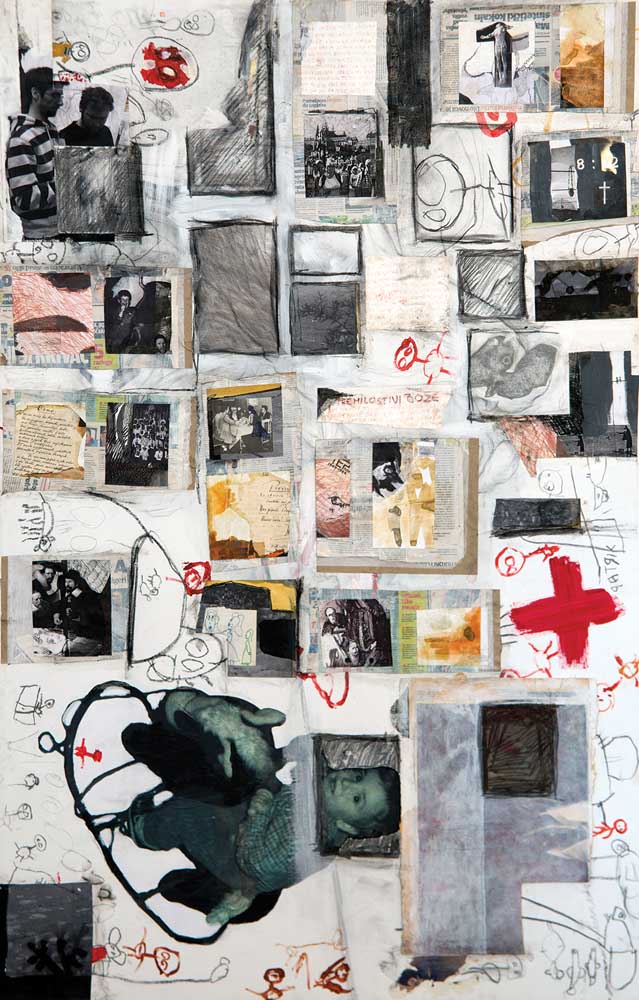
Line of life II, 2015, combined technique, 150 x 100 cm 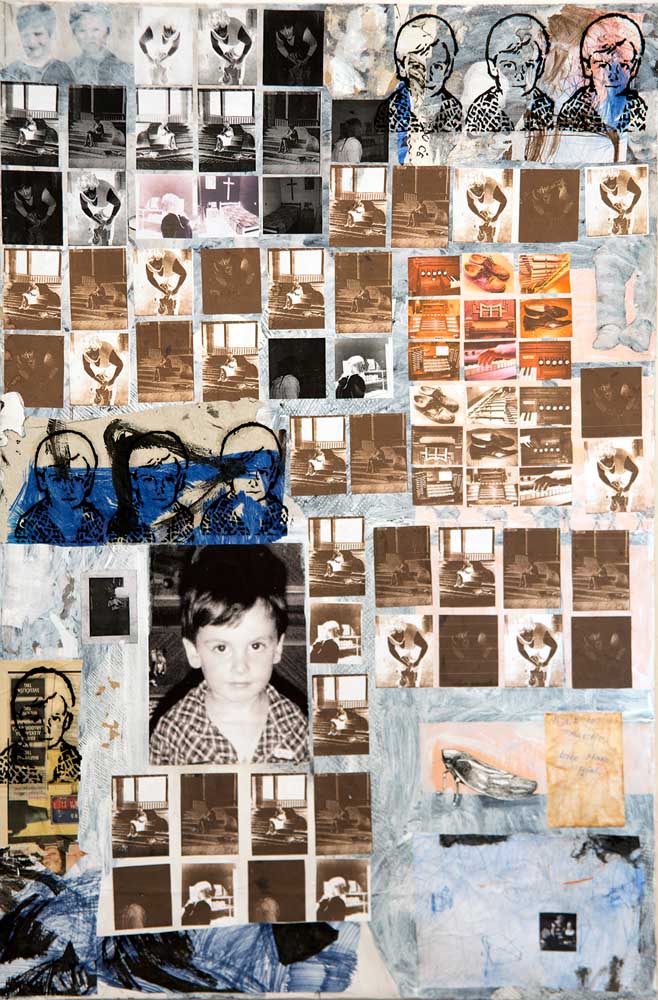
Line of life III, 2015, combined technique, 150 x 100 cm 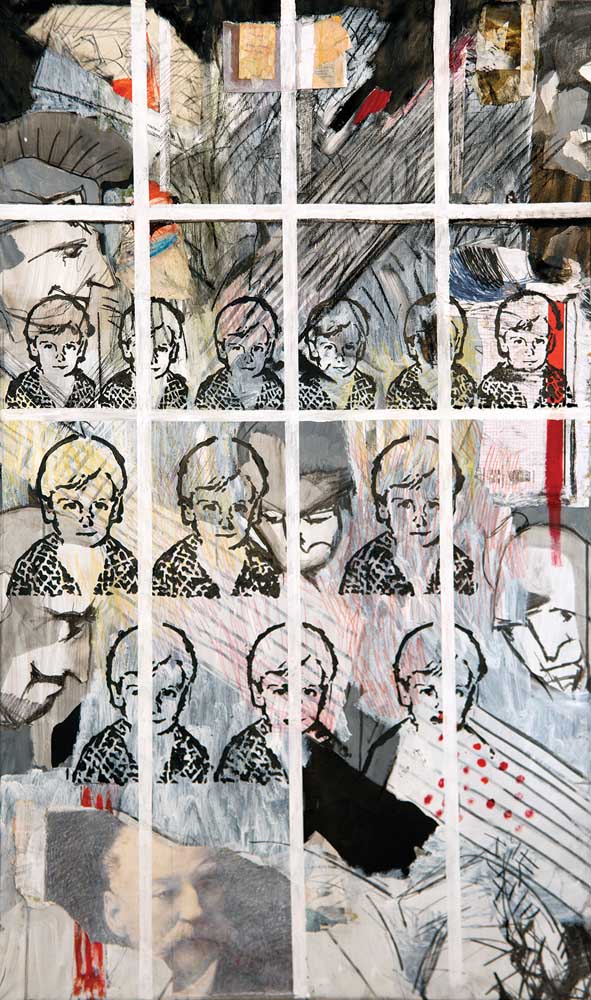
Line of life IV, 2015, combined technique, 150 x 80 cm 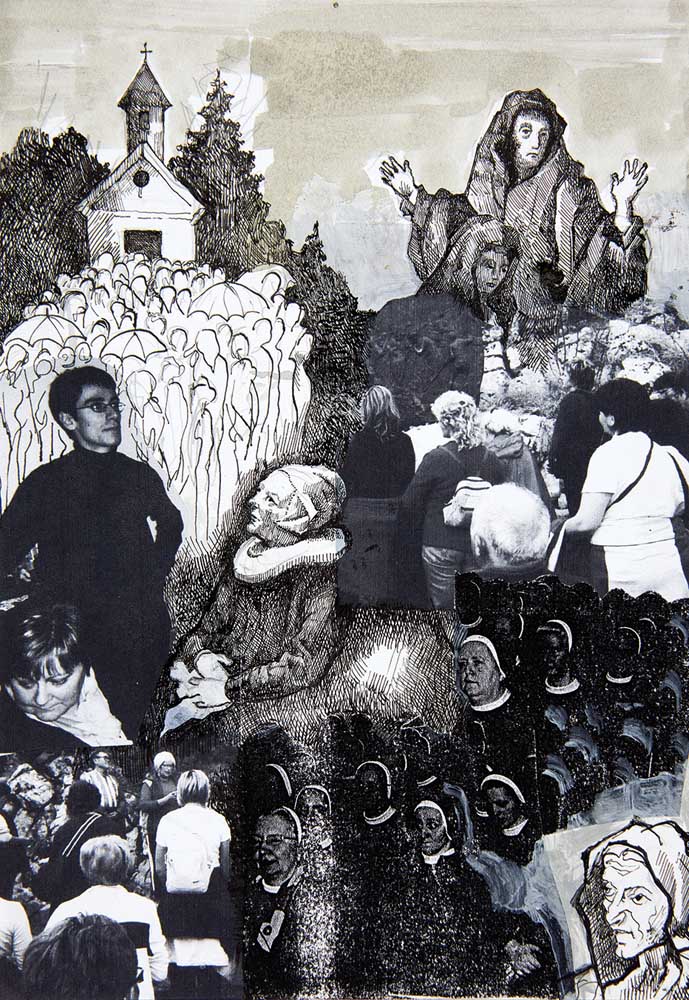
Mourning, 2010, collage and ink on paper, 25 x 17 cm 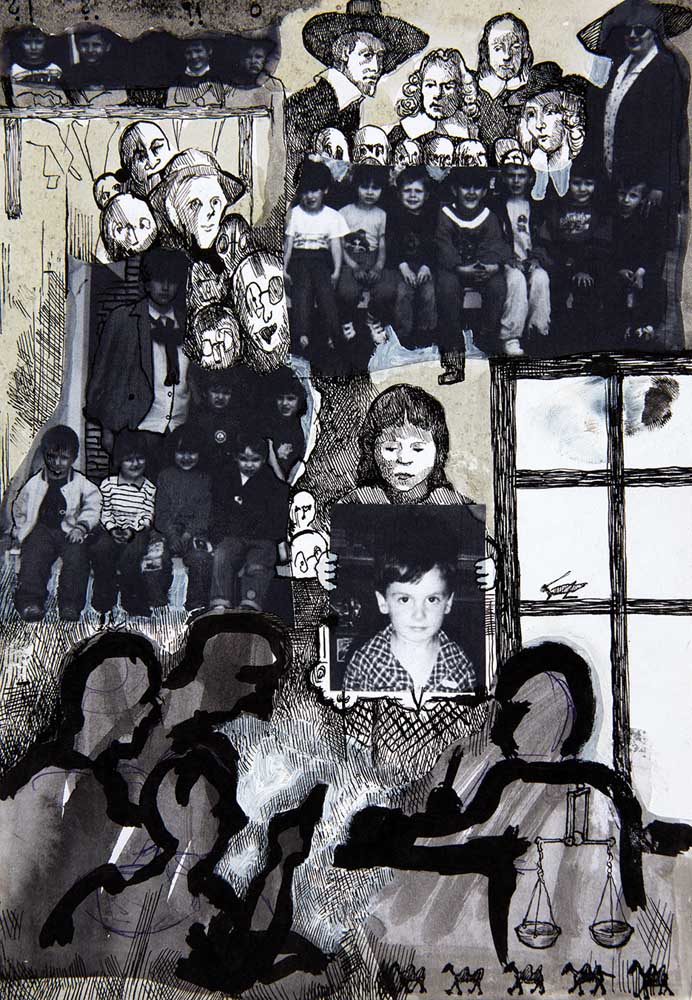
Condemnation, 2010, collage and ink on paper, 25 x 17 cm 
Laying to rest, 2010, collage and ink on paper, 25 x 17 cm 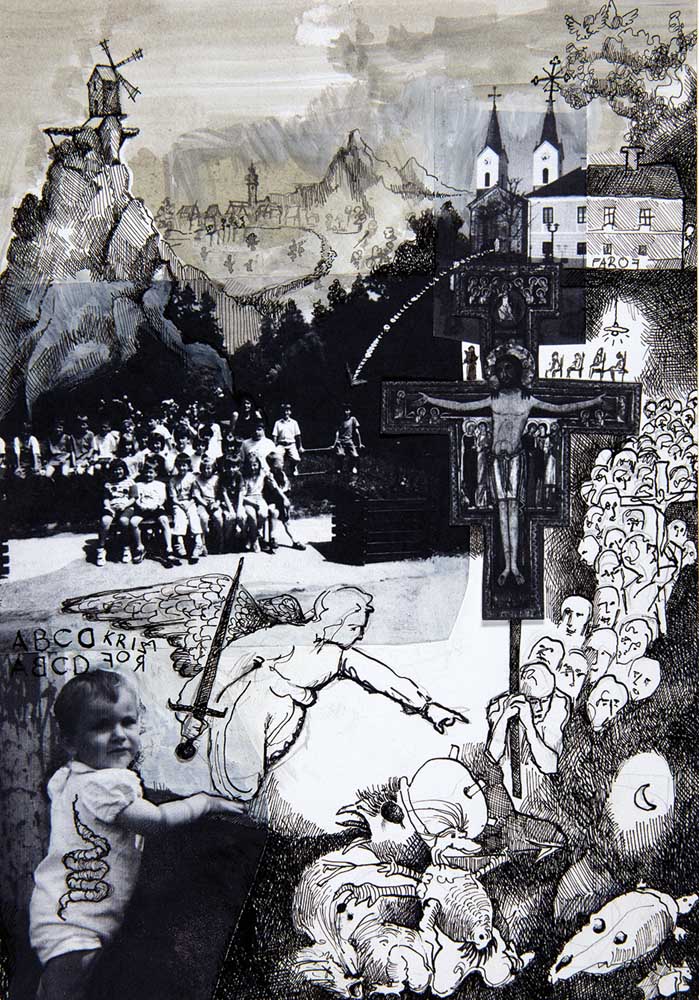
Acceptance of the Cross, 2010, collage and ink on paper, 25 x 17 cm 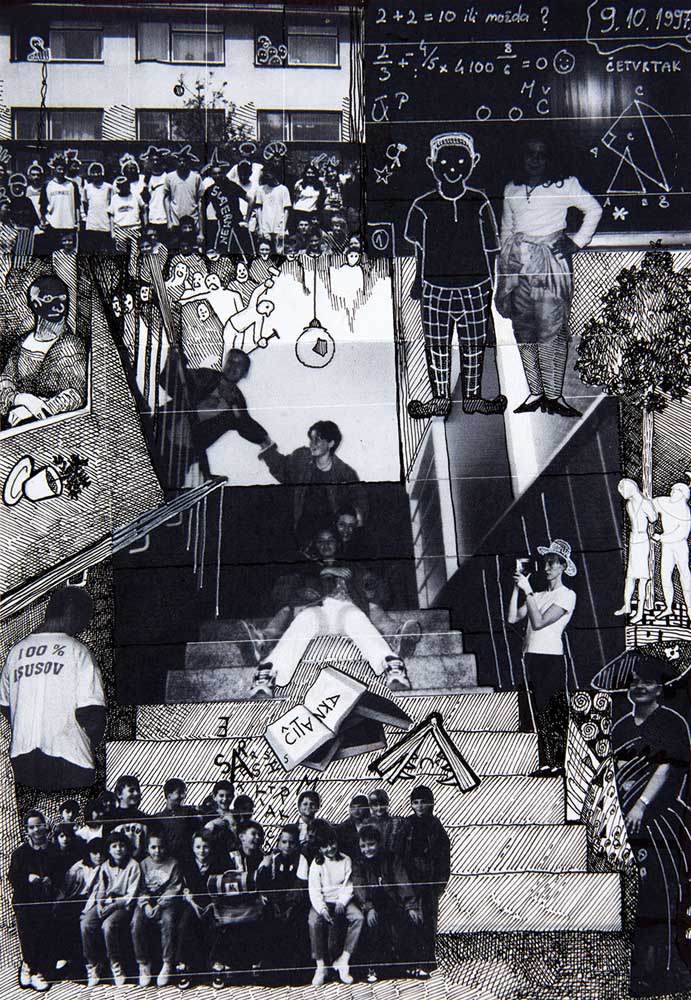
First fall, 2010, collage and ink on paper, 25 x 17 cm 
Crucifixion, 2010, collage and ink on paper, 25 x 17 cm 
Crucifying, 2010, collage and ink on paper, 25 x 17 cm 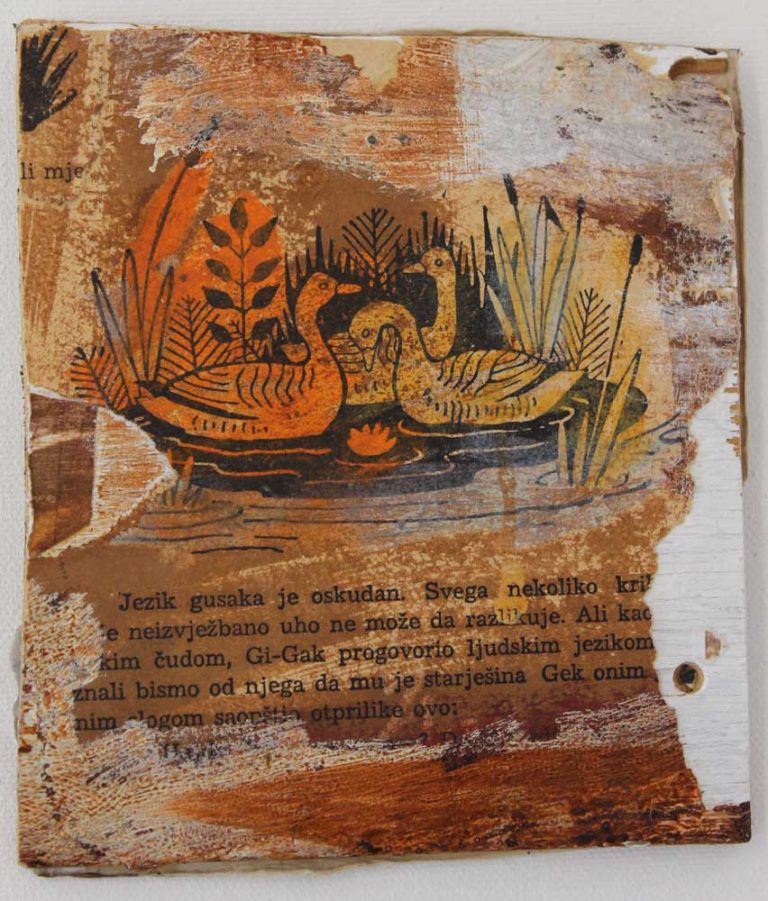
Conversation, 2015, combined technique, 13 x 11 cm 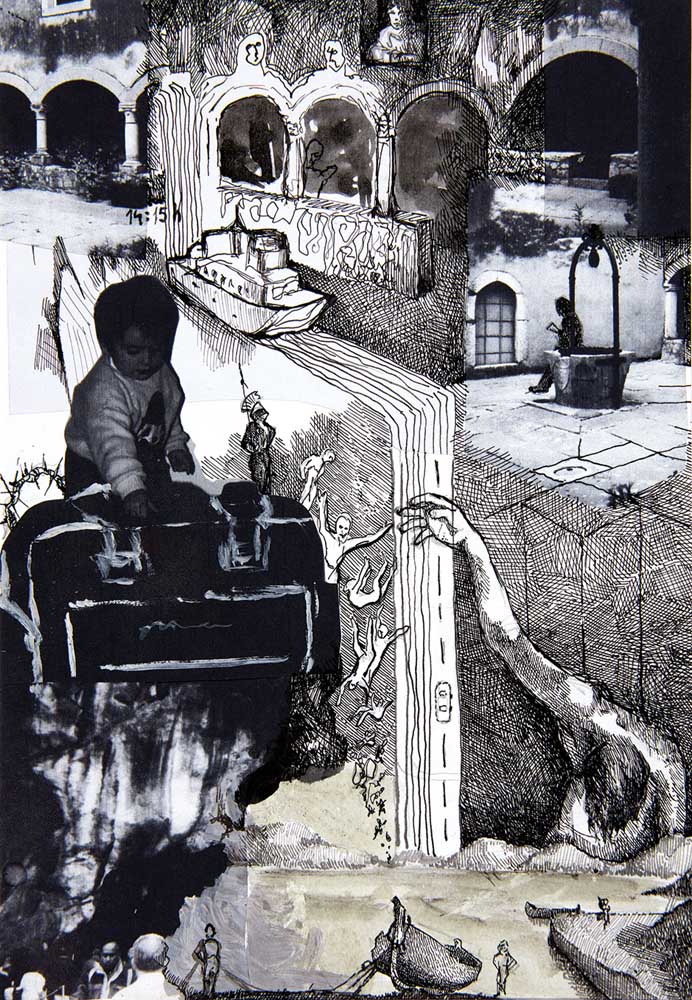
Taking down from the cross, 2010, collage and ink on paper, 25 x 17 cm 
Meeting the mother, 2010, collage and ink on paper, 25 x 17 cm 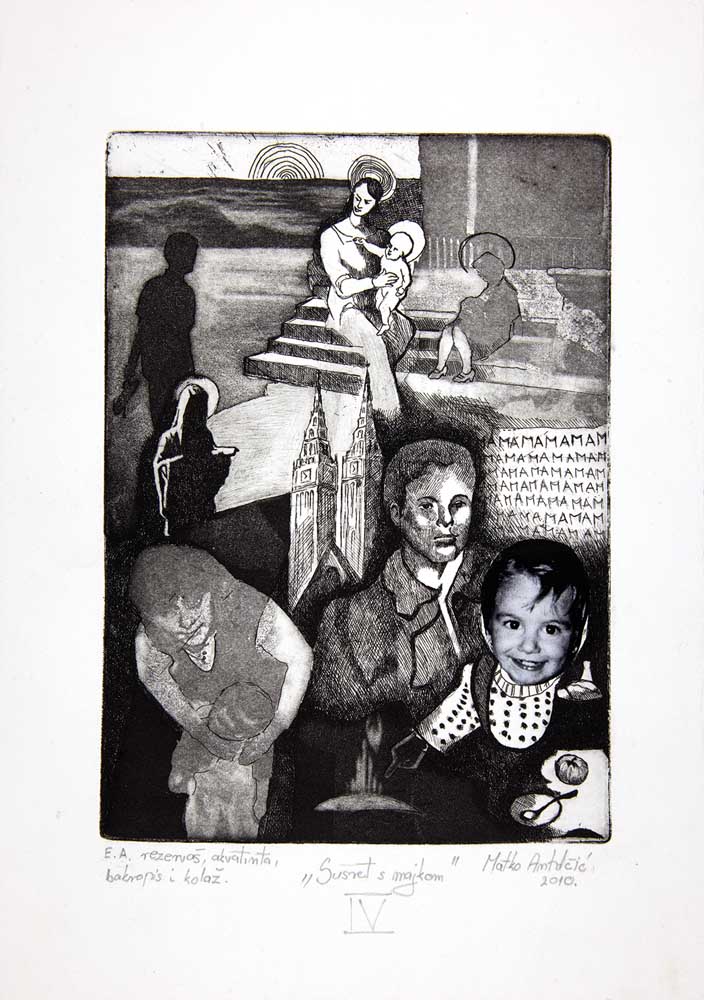
Meeting the mother, 2010, rezervaš, aquatint etching and collage, 25 x 17 cm 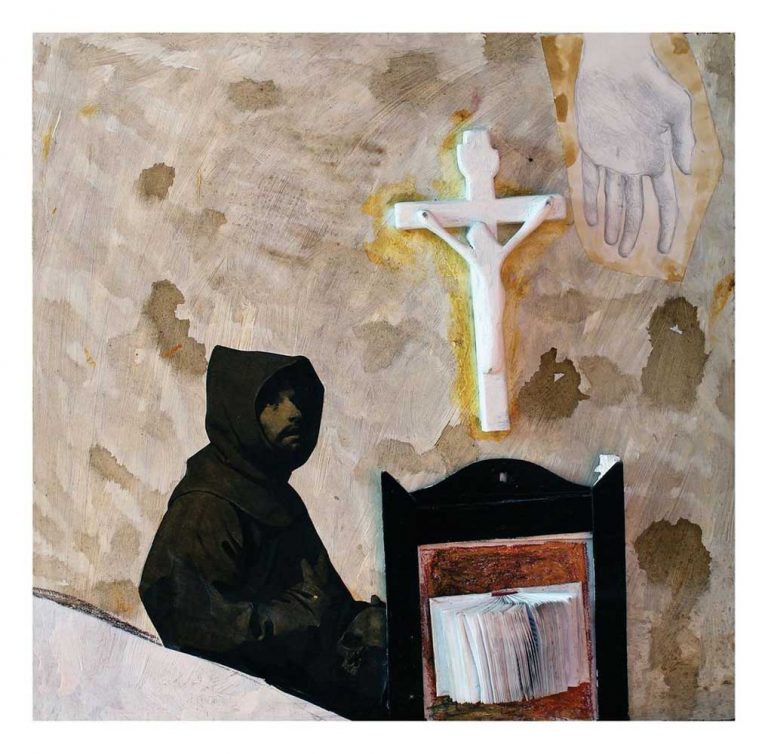
St Francis of Assisi praying, 2015, combined technique, 60 x 60 cm 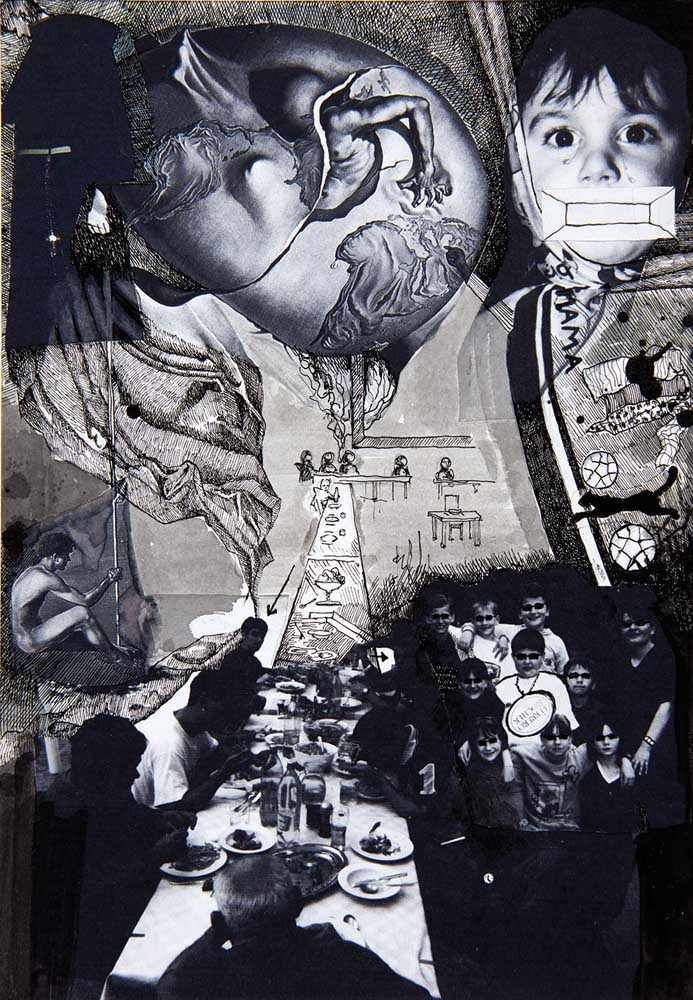
Undressing, 2010, collage and ink on paper, 25 x 17 cm 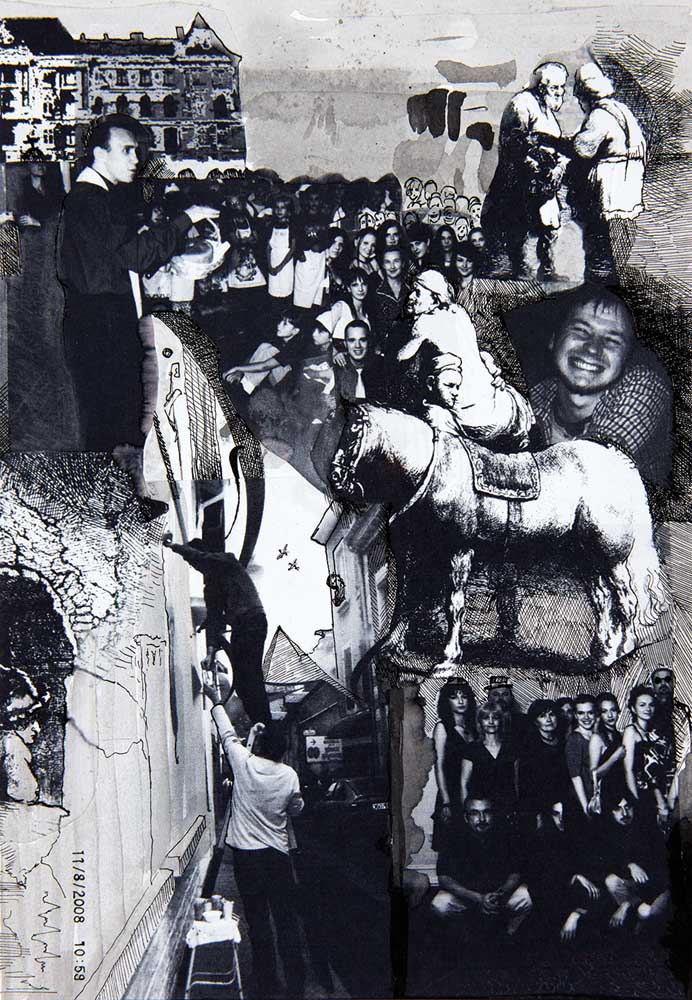
Šimun Cirenac, 2010, collage and ink on paper, 25 x 17 cm 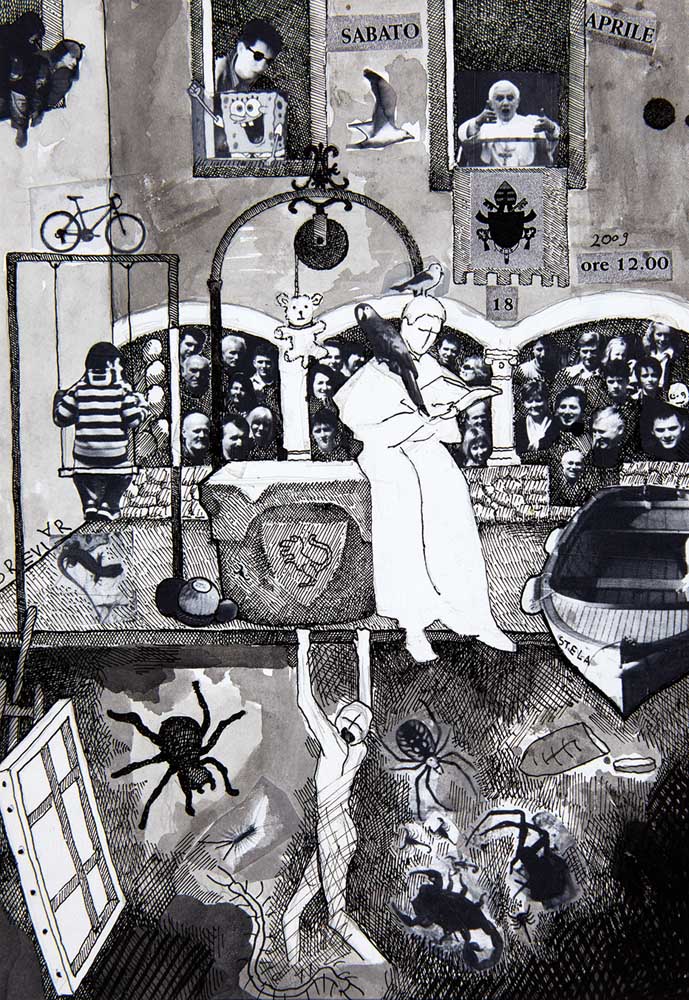
Third fall, 2010, collage and ink on paper, 25 x 17 cm 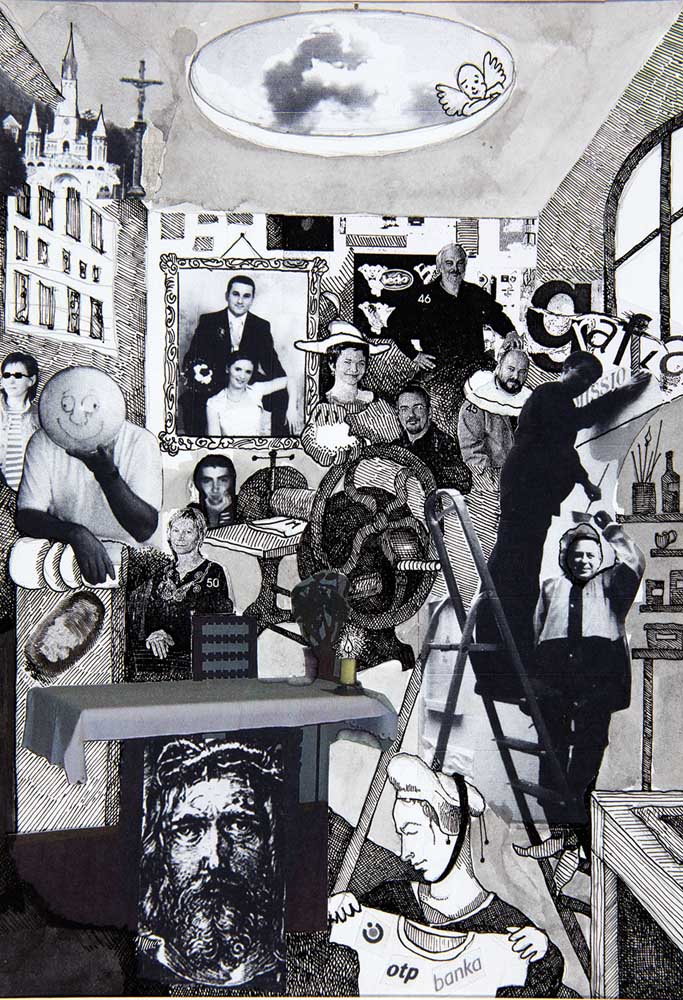
Veronica’s veil, 2010, collage and ink on paper, 25 x 17 cm
An art piece is an expression of life, a reflection of one’s own being in a mirror that reflects the deepest aspirations and human conditions. Matko Antolčić’s paintings are a personal psychogram. Conscious / unconscious lines shape scenes – a new life and reality woven from the experience of the world, sweet / bitter scented memories, contemplation and imagination of real and imaginary events. Antolčić’s powerful and expressive paintings-drawings are a combination of dreams and reality – the chaos of thought embodied in symbols and signs that spring from the subconsciousness where everything is connected. In restlessness and disorder they become the inner peace , the order of the state of everything that is alive and has been lived, woven and shaped by the personal and artistic line of life that connects everything real and imagined by the artist. The author’s oeuvre is characterized by different ways of expression, different techniques, meticulousness in the performance of some parts of the composition, just like in the old masters or the generalization of scenes and ideas.
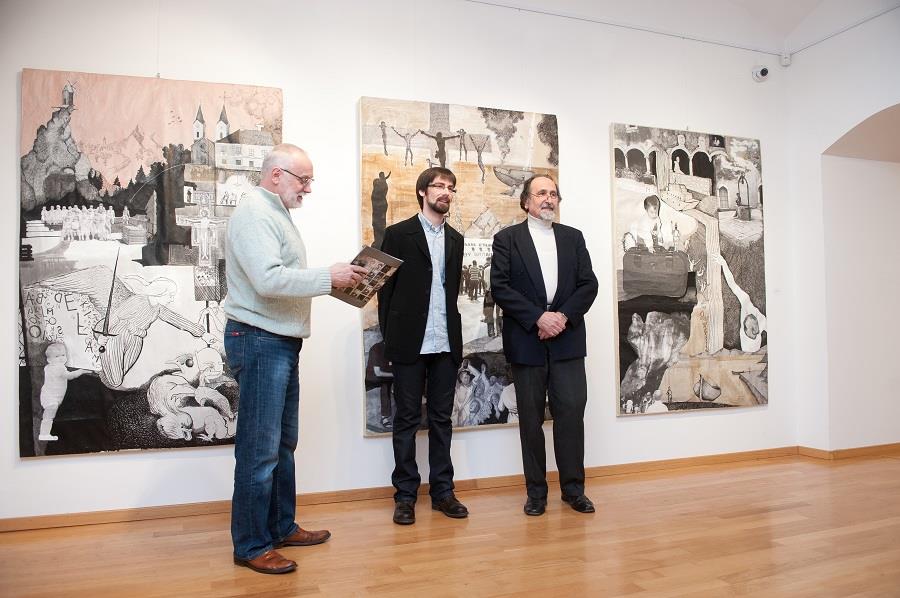
The Way of the Cross, a cycle of collages called Ways and Lines of Life, is the author’s personal diary. While he draws, paints, makes collages, chronologically writes down segments of life, he creates black-and-white stations of suffering. Christ is the artist’s role model, and painting is a confession to God, cleansing from pain and cleansing of the wounds, psychotherapy, and spiritual awareness. He pays attention to people, events and personal life turning points. The works are full of details like the surreal flow of consciousness and dreams. They consist of compositionally and harmoniously blended photocopies of photographs of the author, real people and reproductions or drawings inspired by the works of great artists: Rembrandt, Carravaggio, Goya, Dürer, Dalì, Bosch … Matko shows the observers who demand, expect and condemn as outlines of impersonal figures or caricatures. Heads, skulls and demons are symbols of temptation and trial. Various insects that appear in the works represent fears. Church of St. Mary Magdalene in Čazma and the Zagreb Cathedral, drawings or reproductions of which often appear in the works, are the places of the artist’s refuge. Means of transport – the tram number 6, plane, ship – they are a transition into a new phase of life and maturity. The characters of the saints, friends and the author’s family are his encouragement and support, those who help him carry the cross.
Through the cause-and-effect relations of his life, the artist creates extremely tense and strong compositions, witnessing the power of the painting as a sign and symbol of the inner and outer bloodstream of the work. With the emphasis on the childish, innocent and uncorrupted understanding of the world, repeating the motives of a boy on a rocking horse, Matko in the style of a postmodernist neo dadaist or neo popartist, tells a story with a strong and suggestive gesture about a little knight who longs for redemption and fights against the belligerent rooster, which, on the other hand, in the role of a dragon, embodies the unrest of today.
The virtuosity and extraordinary talent of the young artist Matko Antolčić can be seen in his solid drawing, personal expression, and harmonious compositions in which he often uses quotes interpreting best masters of fine arts, in graphics and drawing, and they all have biblical, historical and autobiographical starting points. From the personal way of the cross one can read the torment of the individual, the torment carried by every man. When will the first, second or third fall happen …? Deep down inside, a person feels and knows what it means to die under threats, condemnation and continuous fighting. It means to be a co-redeemer. The purpose of life is to know the goal – to understand eternity.
Bruna Ubrekić, art historian
